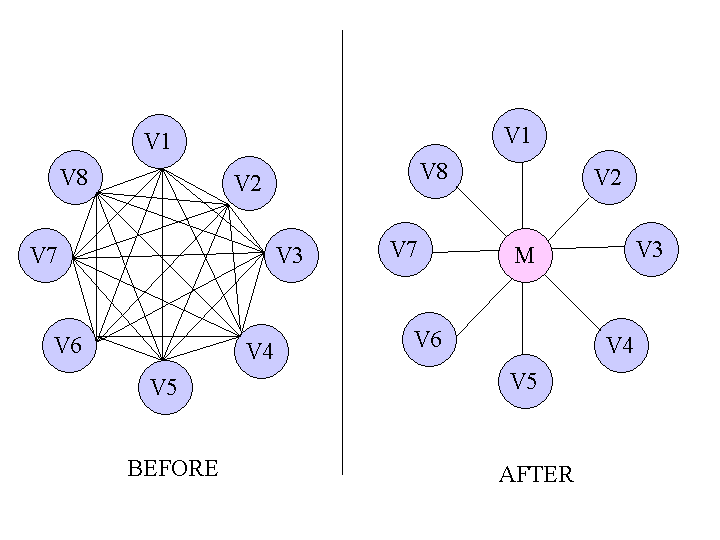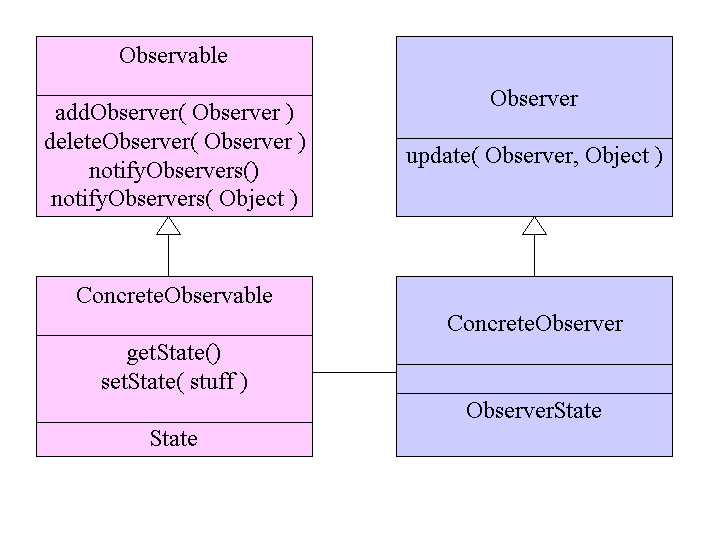| Purpose | Use Observer when:
The Observer pattern requires centralizing state in a model (aka subject or Observable). A before & after structure are given below.  |
| Structure |  |
| Consequences | Creates classes. |
| Implementation |
|
| Sample Code | Model.java, View.java |
| Related Patterns |